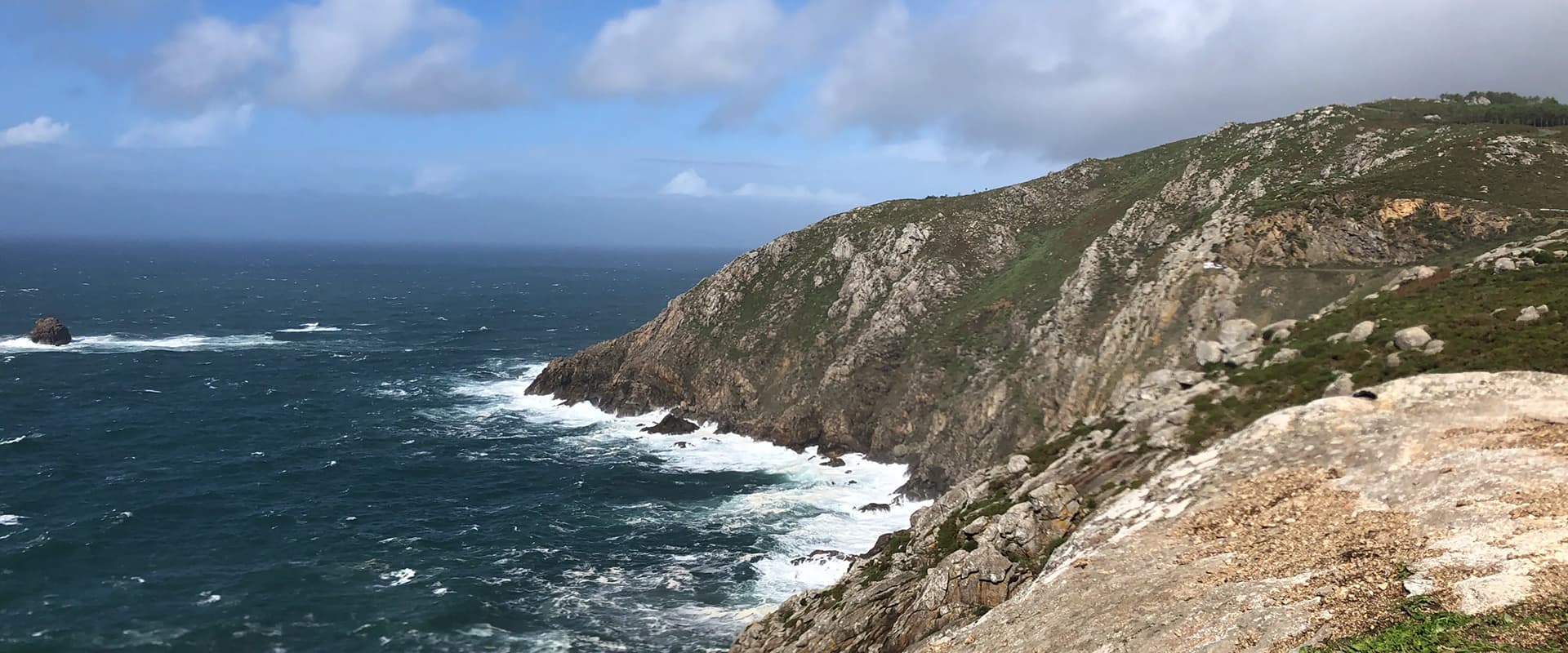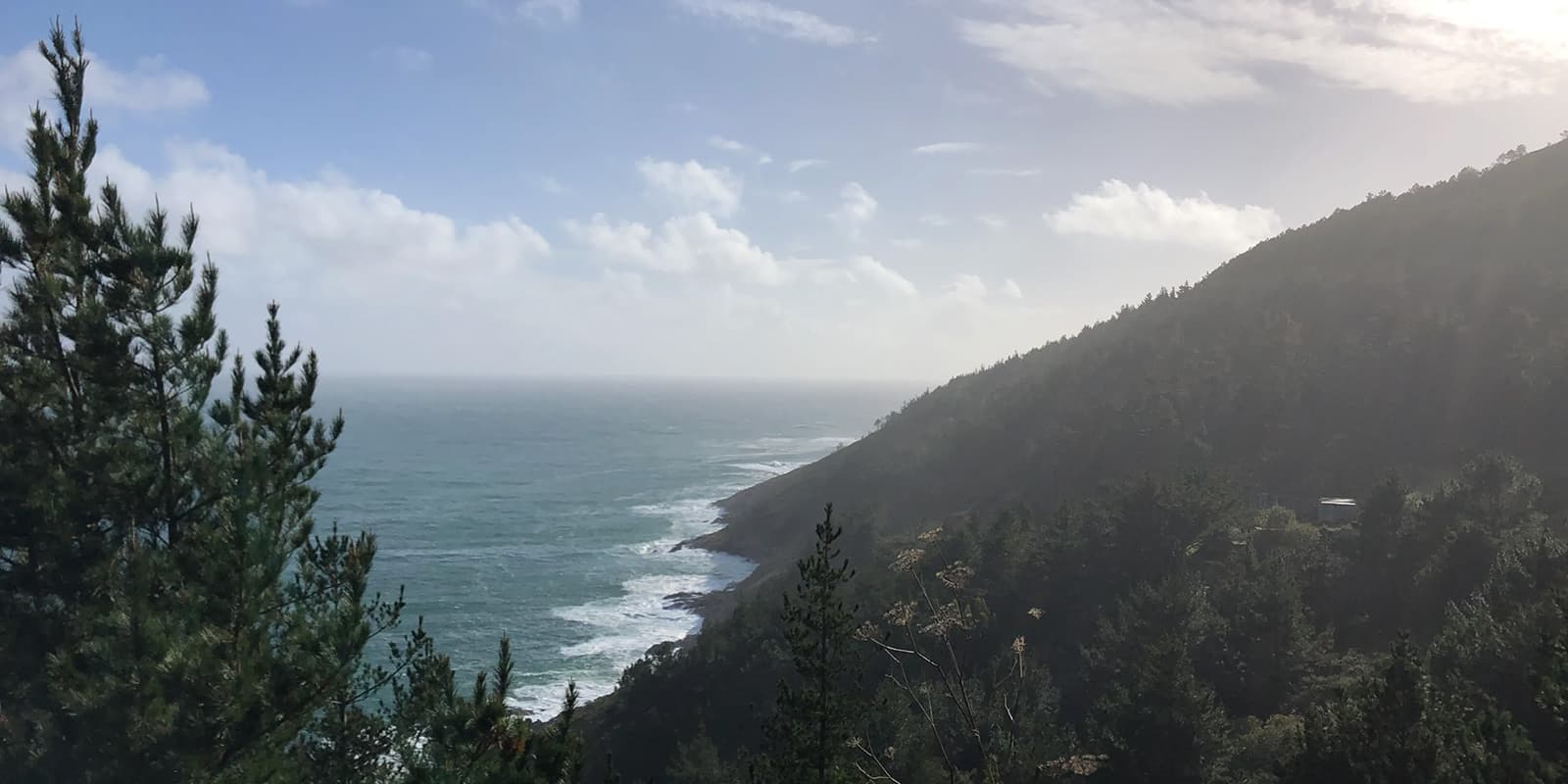The Camino Finisterre is a 90 km long hike to the most western point of Europe, Cabo Finisterre. They call it the way to ‘the end of the world’, because Finisterre literally means no more land. It’s the only pilgrimage that starts in Santiago de Compostela, which is a famous endpoint for the thousands of pilgrims and hikers who arrive here after a long journey. On this trail, you walk through fairytale forests, windy hilltops, peaceful countryside, and rugged coast, discovering the region of Galicia in Spain.
The trail starts in Santiago de Compostela from its official office where you can get your pilgrimage passport. From there, you go west and you’ll soon leave the city center and see the first milestone of the trail. You’ll encounter a lot of them on the trail which is very motivating because they tell you how many kilometers are still to go. The Spanish name is Finisterra, but in Galicia they call it Fisterra, that’s why most of the time you’ll see this pronunciation.
















